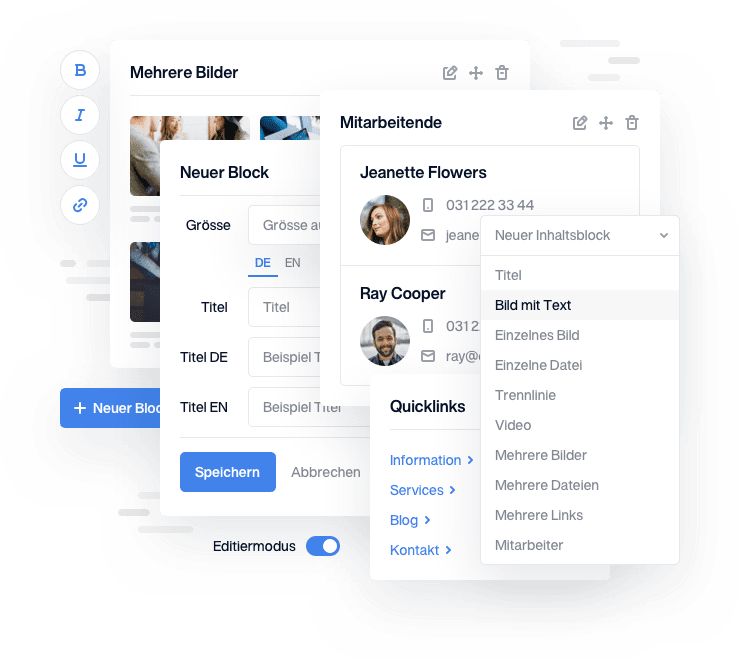Headless CMS and content blocks are not new terms, but are already well known. They differ from the frequently used traditional content management systems (CMS) in that they can manage content for different channels regardless of the end format. With content blocks, web managers also have more design freedom and can define the structure of content.
In our blog post, we explain what content blocks and headless CMS are, what advantages they offer and why we rely on them in our solutions.
What are content blocks and what is a headless CMS?
Content blocks are groups of layout containers and cells used in the creation and management of websites. They primarily structure the content and do not define the design of the eventual representation in the user interface. Therefore, they offer the advantage that content blocks can be reused for different templates of responsive pages.
A headless CMS is a content management system, which consists only of a backend area and thus has no front end. The content is therefore managed here independently of the subsequent output format. This offers the great advantage that different channels can be managed in one place (website content, eShops, brochures, app content, etc.). The representation in the user interface is ensured by means of interfaces. The structured content is inserted into a predefined template.
Most widely used content blocks
There are some most widely used content blocks, but they can be extended as you like depending on your needs. Here we have listed the most common content blocks:
- Text Block
- Image
- Image and Text
- Gallery
- Video
- Separator
- Call to Action
- Button
Depending on the use case, further blocks can be defined. Also those that fetch and display content from other areas or systems. This could be, for example, a product from your online store that is to be advertised on the page of a blog post.
6 reasons for content blocks and headless CMS
Content blocks and headless CMS bring many advantages:
- Intuitive and design freedom for users
- Easy to build responsive pages
- Can be used in multi-/omni channel environments
- Enable a unified customer journey
- Technically flexible and efficient
- Content remains portable as it is clearly structured and can be easily exported
Especially in system landscapes with multiple channels for content presentation, the use of a headless CMS makes sense and thus improves the customer journey of the user. Uniform content on all channels is an important component of a web presence today. Content blocks also make it easier for web managers to maintain content and provide an easy way to structure and process content.
APIs benefit from structured content
Content blocks generate structured content, this content can subsequently be converted into various formats. A very popular format is JSON, which is mostly consumed via REST APIs . This provides content via an interface that can be connected by third-party systems. The consuming system in turn processes the structured content and presents it in an arbitrary form.
Generate PDFs automatically
Structured content offers an additional feature, and that is that it is "predictable" due to its structure. This makes it possible to generate PDFs according to a schema. Therefore, for example, the exact same content can be displayed on the website in layout X and downloaded in layout Y, as a prepared PDF via a button within the website. By using a headless CMS, the content for this use case only needs to be maintained and structured once.
Headless CMS with our platform stack
In our platform stack we rely on a headless CMS with which you can maintain structured content yourself and play it out on public pages. In addition, you can also manage and make the content available on platform-internal pages for logged-in users. Of course always multilingual. For us, the focus is on solutions with accessible data. Therefore, your data can be made accessible to other systems via APIs. Benefit from our smart platform architecture and start your innovative project with us. Contact us today Project request !


